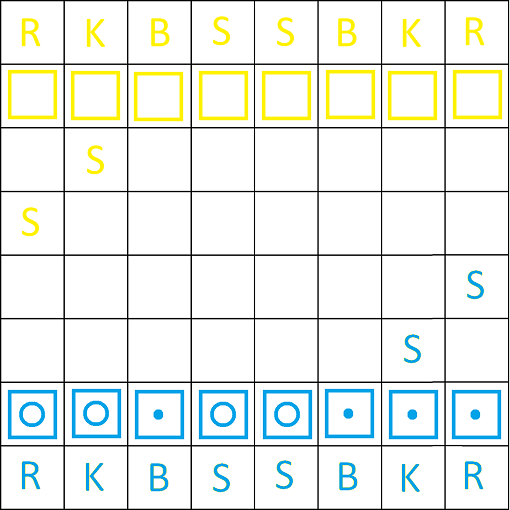

Blue's turn.
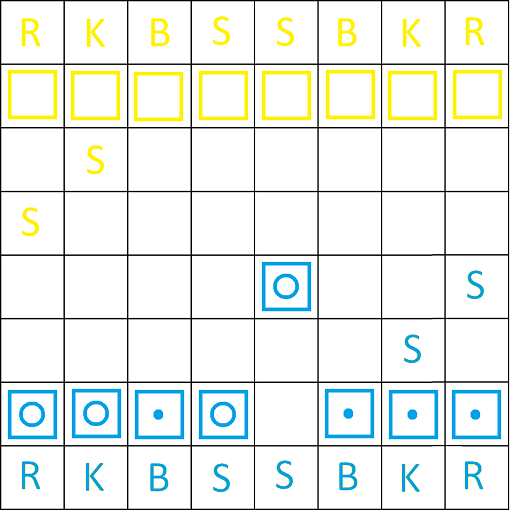
Blue opens things up for both a seahorse and a bishop.
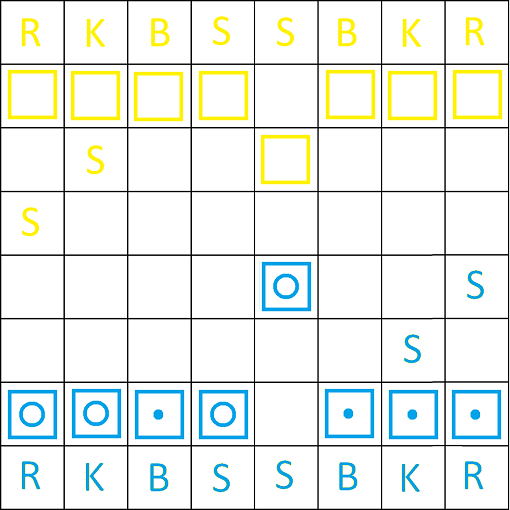
Now the more dangerous bishop can get out and harass seahorses.
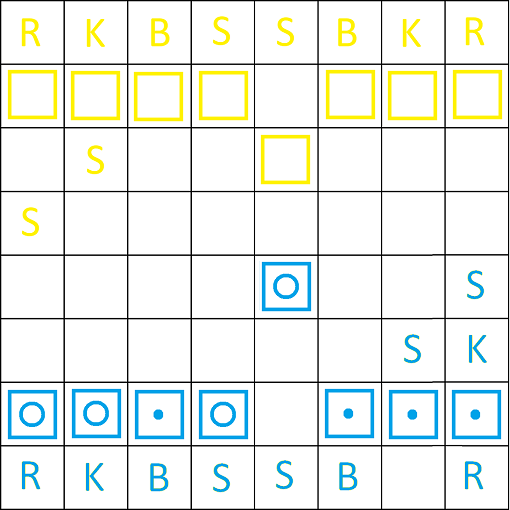
The knight should get out more. Also having extra padding in front of your target square can't be bad.
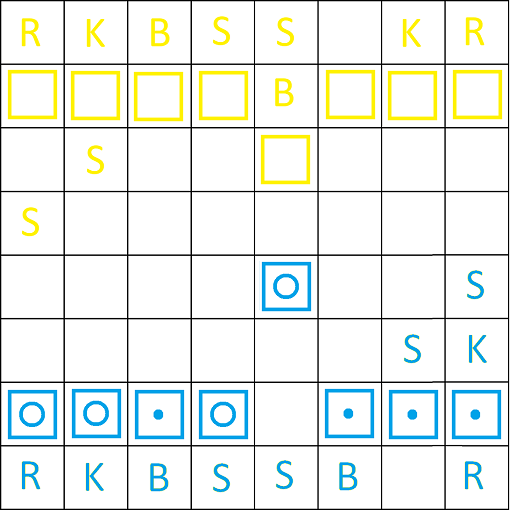
Bishop starts to harass a seahorse.
classic chess pieces -> seahorses -> cubes -> classic chess pieces
Should the blue player roll the dice and move the seahorse out of the way? What could happen? Some numbers are more likely than others with four 1/0 dice.
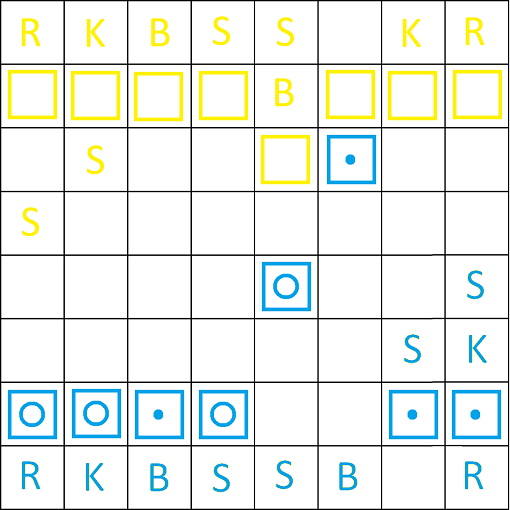
Denied. Yes, you can move that far forward. This stifles yellow's movement.
Now should yellow attack the cube with its own cube (the third yellow
from the right)? This would be a significant risk. It's 50/50.
If you win you can let your bishop threaten the seahorse again, you have
removed one of blue's vital cubes and there is that inviting, temporarily
open door to blue's back line. You would expose some ring/dot data. If you lose you have lost a cube, you
have effectively lost a turn, and your vision square is more threatened.
Blue would expose data.
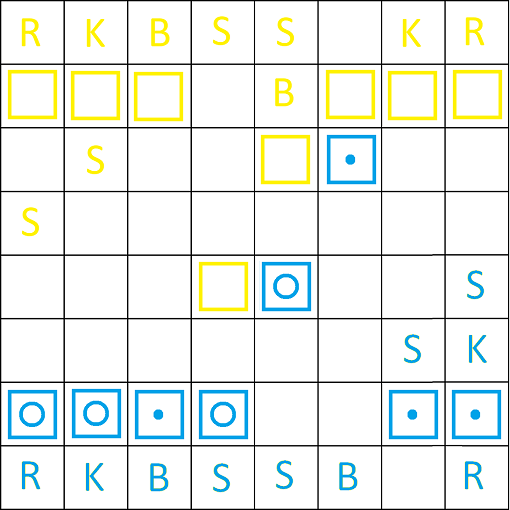
Yellow has opened things up for a seahorse to move.
Yellow has other seahorses to move, but they are protecting the target
square, and having different options for seahorses is good.
Note that yellow's
bishop still has an option for harassing a seahorse.
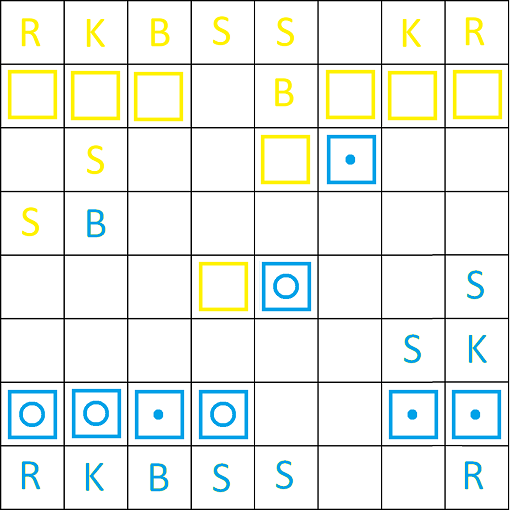
Touché.
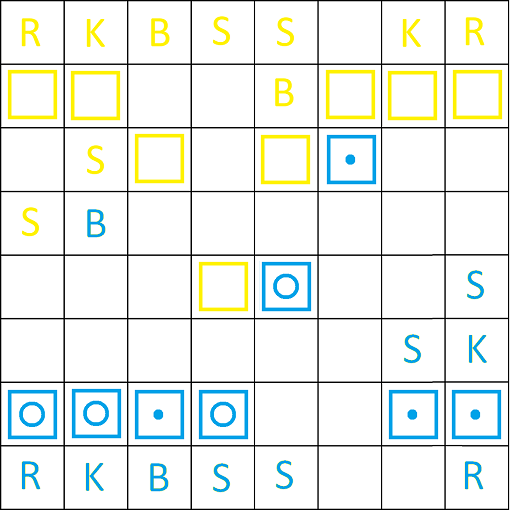
Had to be done.
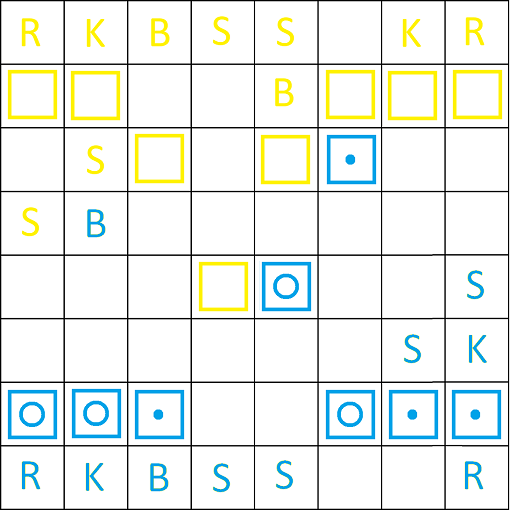
Blue moves a cube. Now a yellow cube is in the path of a blue seahorse. The chances of moving a seahorse three squares is one in four. In addition, the target square area has been reinforced.
Yellow decides to get a seahorse moving. Yellow rolls four dice and gets a total of .. zero. The chances of that is one in sixteen.
Blue decides to get a seahorse moving. Blue rolls four dice and gets a total of .. zero. The chances of that happening twice in a row is one in 256.
Let's try this again. Yellow rolls four dice and
gets a total of three. At this point yellow has a choice of which seahorse
to move (or not move at all). Could this be the first capture of the
game?
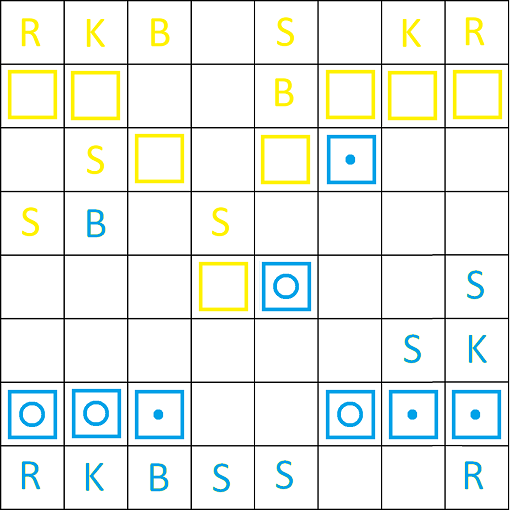
If yellow captures a cube with a seahorse on the far left side, this could kick off a war on the far left, which yellow might not win. Note that the target square is more important than the vision square.
Yellow plays it safe and moves a seahorse forward.
Blue rolls a three. The first capture of the game will be made. But the question is where.
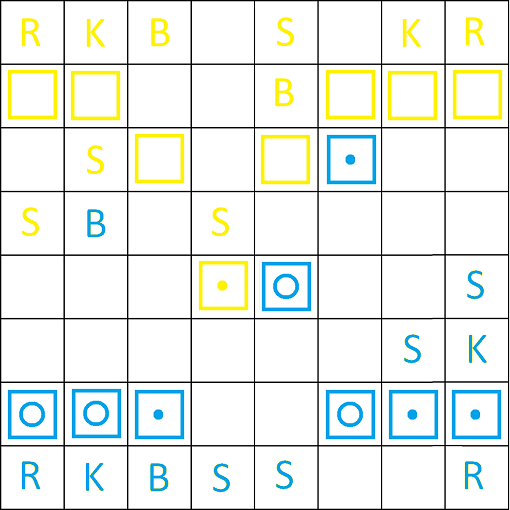
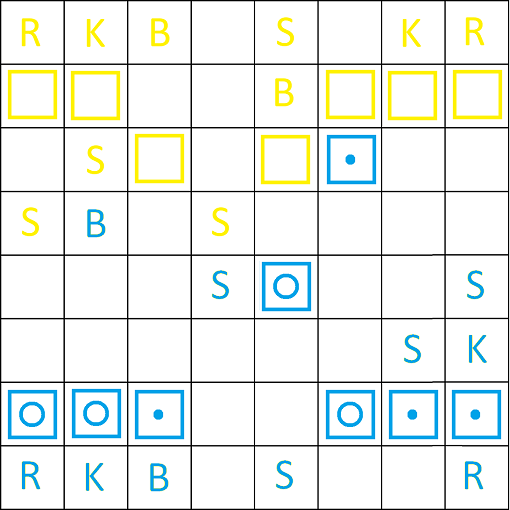
The blue seahorse from the back line captures a yellow cube. The yellow cube reveals data, not that it really matters.
What should yellow do?
One option is for the bishop to move down to A) harass a seahorse or two, and B) open things up so that yellow cubes can transfer laterally where needed, left or right.
A seahorse could shuffle around, to attack or to hide.
The cube at the top right could get out of the way, in two steps. Then
the rook could start kicking some butts.
The blue bishop on the left is a real pain, and I don't know how to get rid of it.
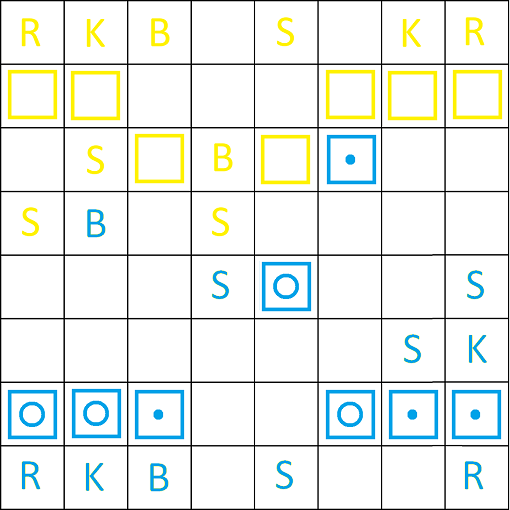
Yellow moves bishop
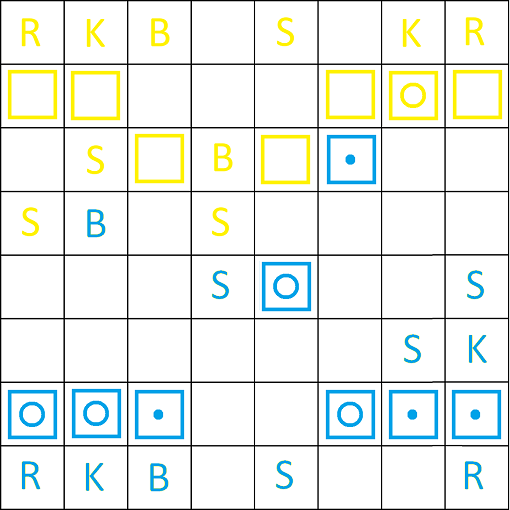
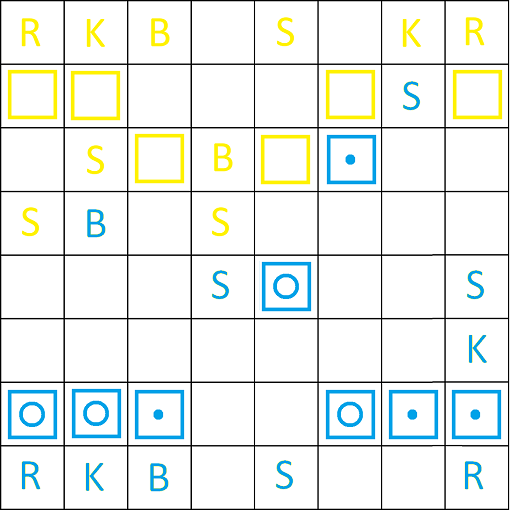
Blue rolls a four. Wow! One in sixteen. Blue is not about to take the corner though.
How should yellow respond? Yellow could move a bishop and scare away the seahorse intruder.
Yellow rolls a one. Yellow could quietly move a seahorse aside, so the annoying blue bishop is much less annoying.
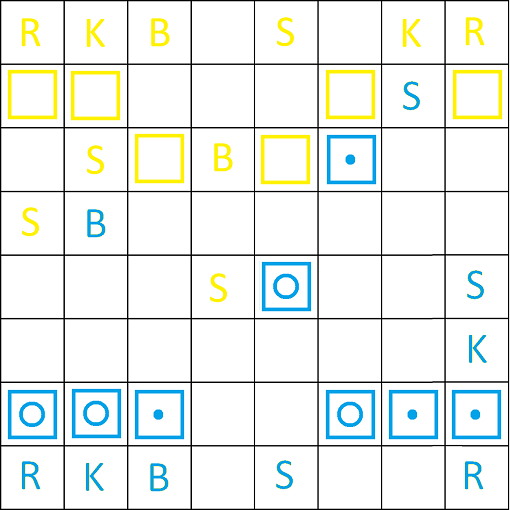
Yellow seahorse captures blue seahorse. Well that's exciting. But did yellow think things through?
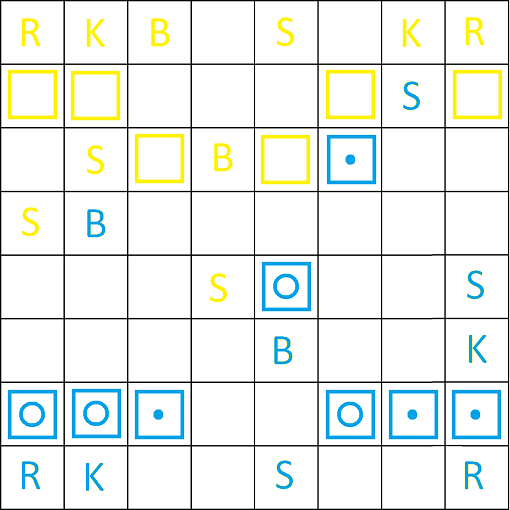
Blue moves bishop.
You've been seeing a lot of bishops threatening seahorses. That is actually not typical.
Also blue has done an oddly, unusually successful job of boxing in yellow.
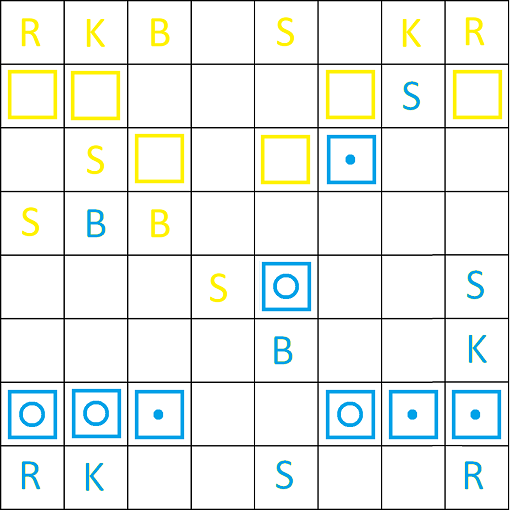
Yellow moves bishop. Huh
Should a blue cube take the bishop? This will come at the cost of exposing data, and then ..
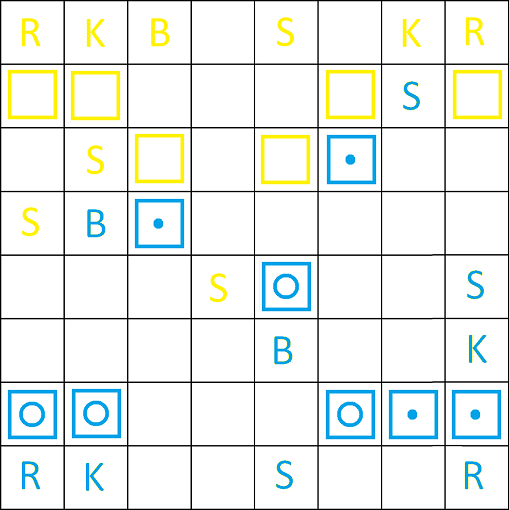
Let's find out. Blue cube takes yellow bishop.
I'm not sure what yellow should do. If you're curious about yellow's options, you could look at yellow's perspective. Search for turn 17.
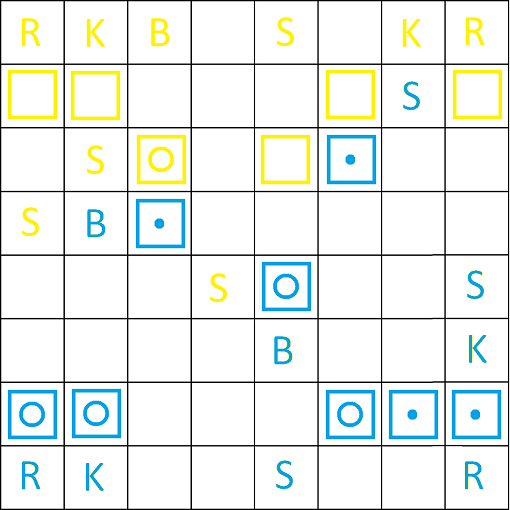
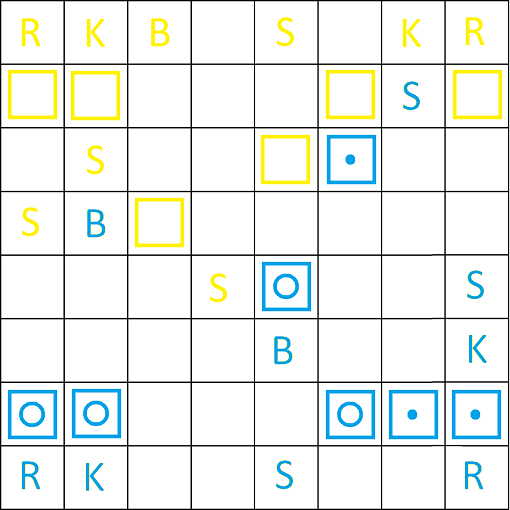
After much debate about the best option, yellow cube captures blue cube.
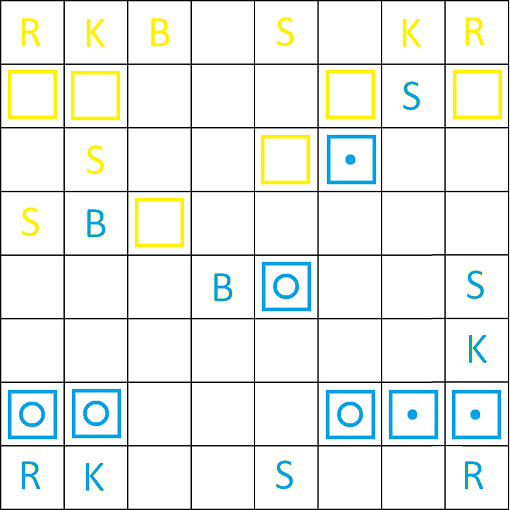
Blue bishop captures a seahorse.
Why did blue not move a cube to block the path to its back line?
Does blue have the right type of cube to handle that yellow cube?
Is blue using a combination of bluff, the seahorse and the fact that it's
just the vision square to defend that corner?
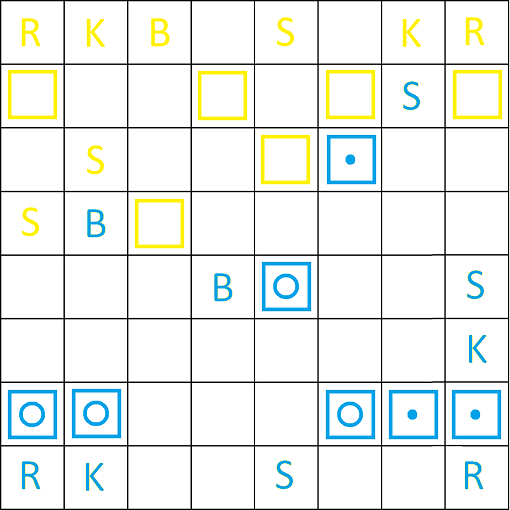
Uh huh. Yellow moves a yellow cube laterally.
Blue elects to roll the dice. The total is three.
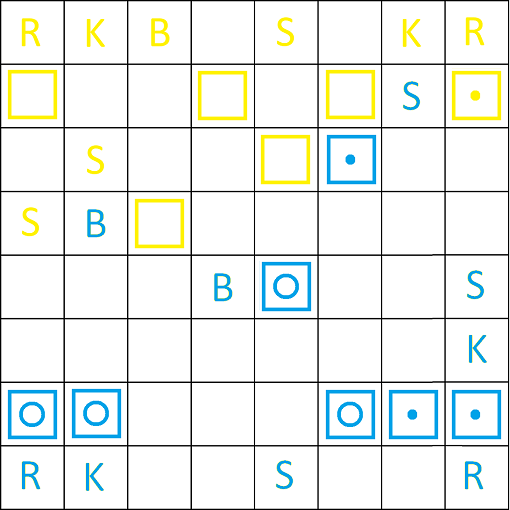
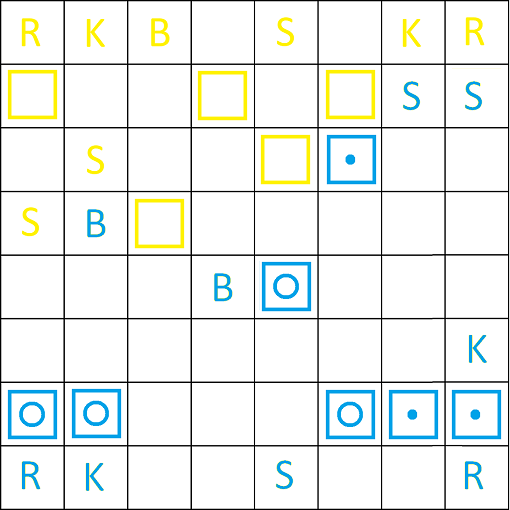
Far right seahorse captures a cube. It's getting weird on the far right,
but taking a cube, especially with a seahorse, is a good thing.
Will yellow be observant enough to catch that a blue bishop is in a
position to get to the yellow vision square? And speaking of being observant, do you remember which type of yellow cube is in the third
column?
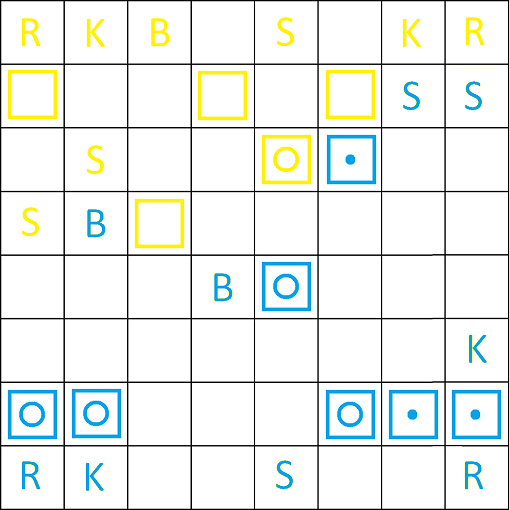
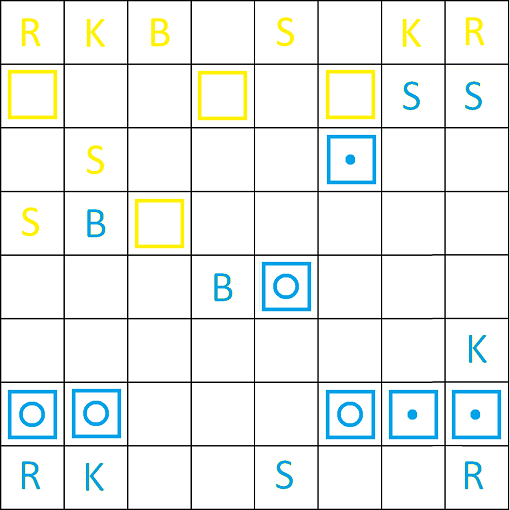
Yellow cube in the fifth column charged down yelling and screaming and .. lost. That was a big risk. Things are not looking good for yellow.
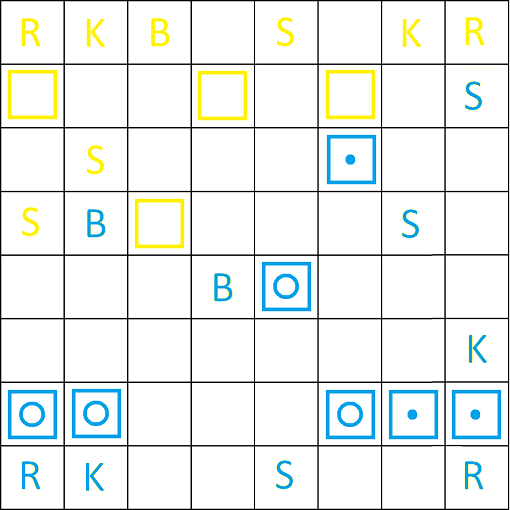
Blue rolls two and moves a seahorse down. Nothing to see here.
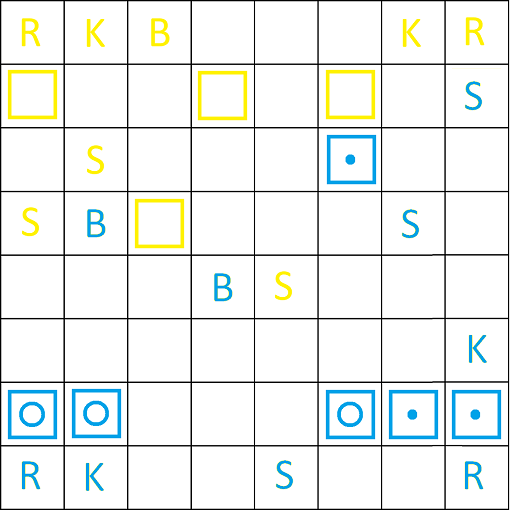
Yellow rolls a four and captures a blue cube. Yellow gets a lucky break! There was a method to the madness of that banzai charge in the previous turn.
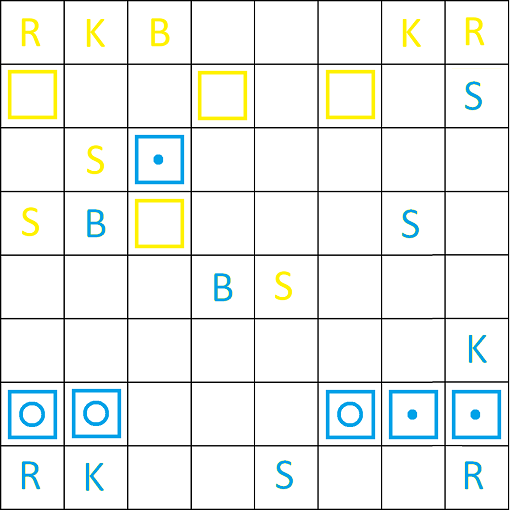
Blue has shuffled a cube left. The fox has been let loose in the chicken coop, and feathers will be flying.
Should yellow take the cube in the third column - which had revealed its datum - two spaces right to block the bishop?
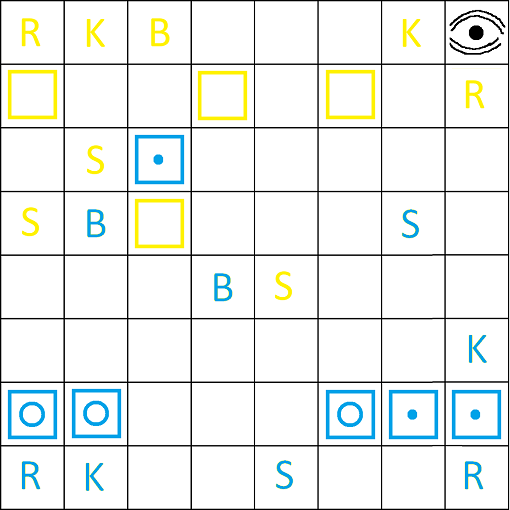
Yellow rook captured a seahorse. Bad things are about to happen, but at least rook got out of the way and chalked up a seahorse.
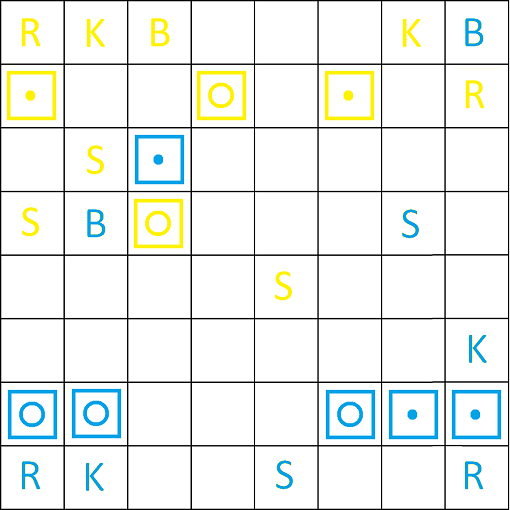
Bishop takes the vision square. Yellow can easily switch this off again with the rook, but there is not much point. Having yellow attack with a seahorse is probably the best option, but it is a risk.
Yellow rolls a two. Not the best result.
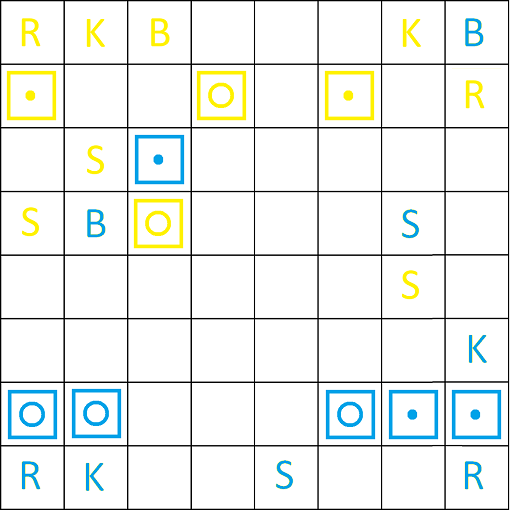
Turn 28.
Yellow moves a seahorse at the bottom right.
Blue is on its way to winning. But .. what shoud blue do right now?
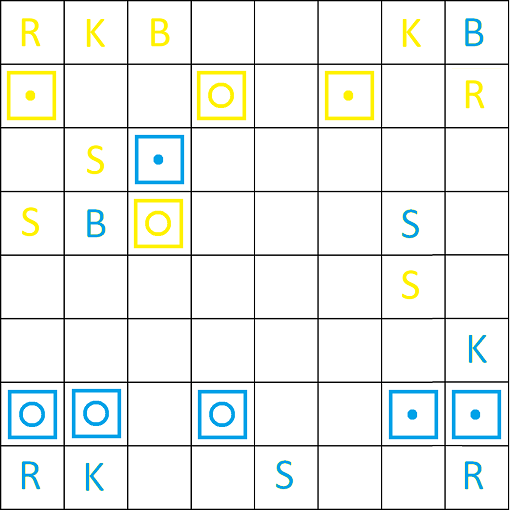
Blue moves a cube left. Blue is kind of flopping around without being certain of what to do. Fortunately yellow is even more confused.